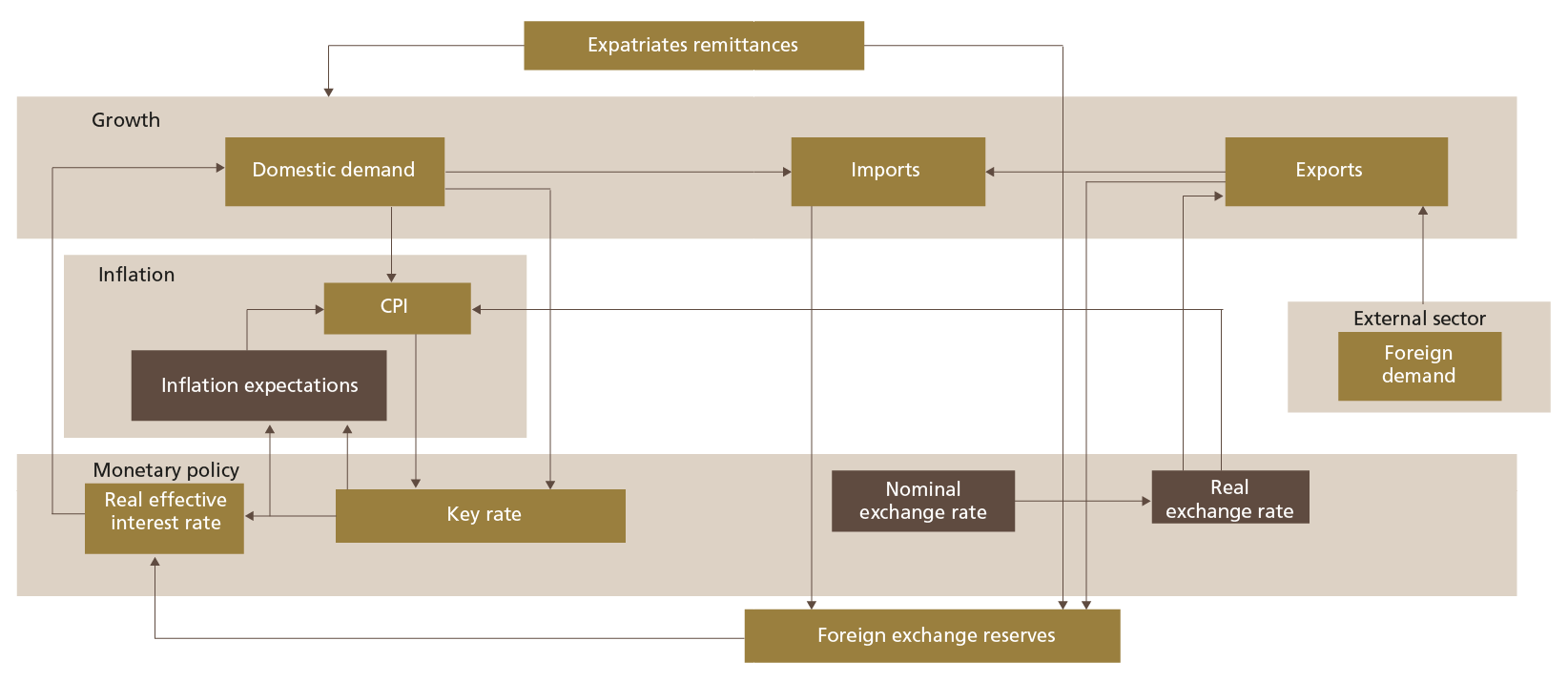Forecasting mechanism
The analytical framework of monetary policy enables to project the future medium term trajectory of key indicators for the monetary policy decision. For inflation and growth, in particular, forecasts are are published in the form of fan charts, which illustrate the most likely trajectory of the forecast and the surrounding uncertainties.
| FUNCTIONAL SCHEME OF THE MONETARY POLICY MODEL |
|---|
 |
In 2015, the Bank put in place a new forecasting mechanism, based on a central model of monetary policy, fed and supplemented by numerous satellite models:
• The central model, of semi-structural type, is based both on the theoretical foundations underlying the general equilibrium models and on the adjustment to the data characterizing empirical models. It is a flexible and interactive tool which integrates both short-term satellite model projections and expert judgment to produce medium-term projections.
It is composed of four interconnected blocks:
- Growth: relies on a disaggregation of demand which makes it possible to apprehend the dynamics specific to each component
- Inflation: to identify the nature of inflationary pressures, a distinction is made between core inflation, and inflation of administered products, fuels and lubricants, and of volatile food products
- External sector: In addition to foreign demand addressed to Morocco, this external block includes several other variables, notably interest rates and inflation in partner countries, the euro/dollar exchange rate and the prices of raw materials
- Monetary policy: adapted to the current monetary policy regime, this bloc provides the possibility of an adjustment to the transition to a flexible exchange rate regime
The reaction function of the central bank is endogenous and allows to determine the path of the interest rate in line with the objective of price stability.
• Satellite models are used to feed the central model with initial conditions (one or two-quarter forecasts) and to develop medium-term forecasts for variables not covered by the central model. These are some aggregates of public finance, the external account and the monetary sector.
In addition to the central forecast scenario, this mechanism allows the development of alternative scenarios simulating shocks on some key variables, including growth and inflation in partner countries, commodity prices, ECB monetary policy, Cereal production, etc.





























